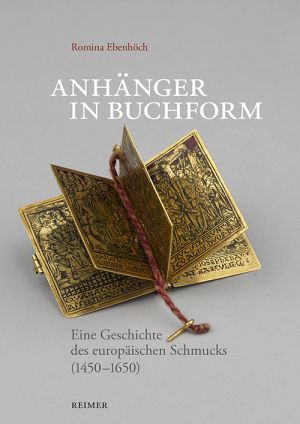
Zitationsvorschlag
Lizenz

Dieses Werk steht unter der Lizenz Creative Commons Namensnennung - Nicht-kommerziell - Keine Bearbeitungen 4.0 International.
Veröffentlicht
Anhänger in Buchform
Eine Geschichte des europäischen Schmucks (1450—1650)
Mit der Verbreitung des Buchdrucks entstehen in Europa ab der Mitte des 15. Jahrhunderts kostbare Schmuckstücke, die als Bücher in Miniaturform gestaltet sind. Sie sind nur wenige Zentimeter groß und mit Buchrücken, Buchschnitt und Schließen versehen. Doch es handelt sich in der Regel nicht um Verkleinerungen ‚richtiger Bücher‘: Statt bedruckter oder beschriebener Pergamentblätter bergen die Anhänger in ihrem Inneren meist bebilderte Metallblätter oder fungieren als Behältnis z.B. für Reliquien.
Die repräsentativen Schmuckstücke dienten ihren Träger:innen als Statussymbol, drückten ihre humanistische Gesinnung und Belesenheit aus, aber konnten auch ein konfessionelles Statement sein. Zugleich waren sie oft ein Mittel der individuellen Andacht und Glaubensvergewisserung oder versprachen als wirkmächtiges Amulett Schutz.
In ihrer Studie legt Romina Ebenhöch erstmals einen Katalog dieser besonderen Gattung von Schmuckanhängern vor und analysiert die Funktion der Objekte.






